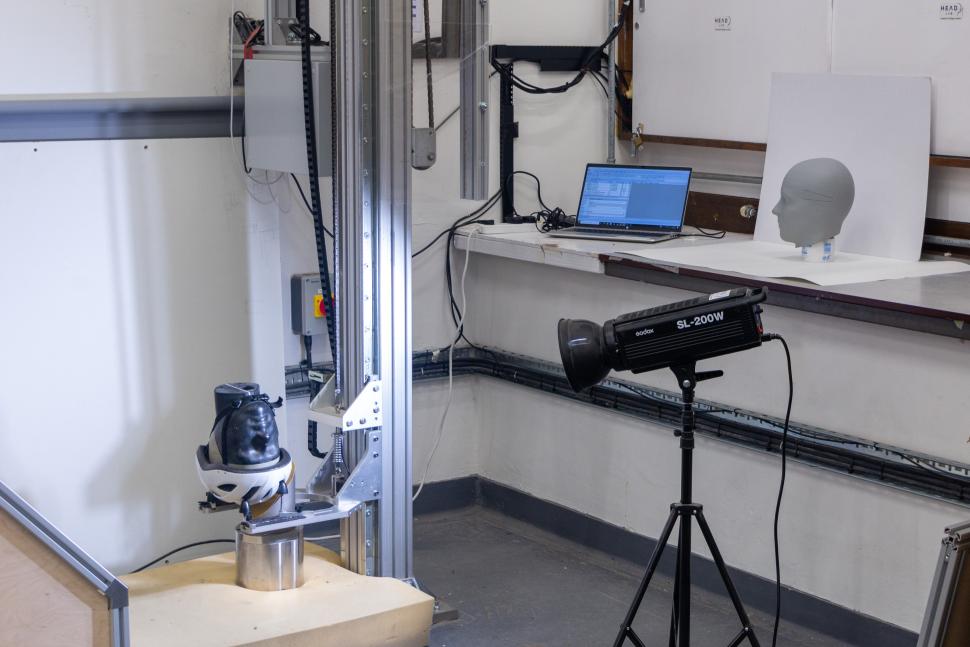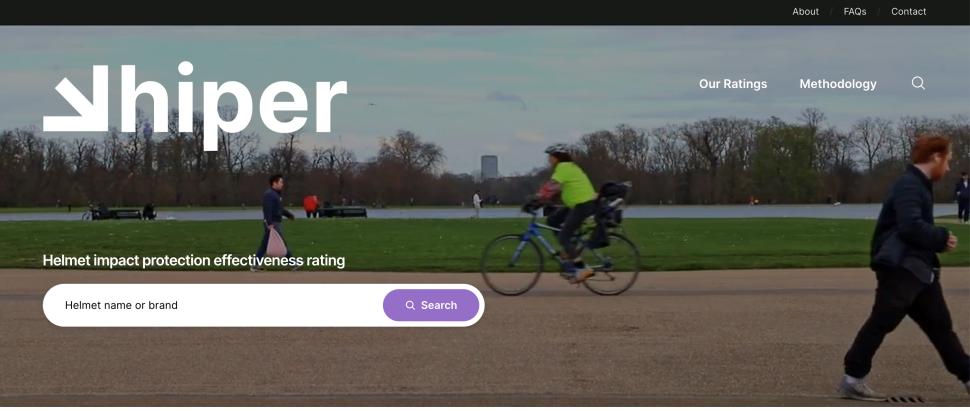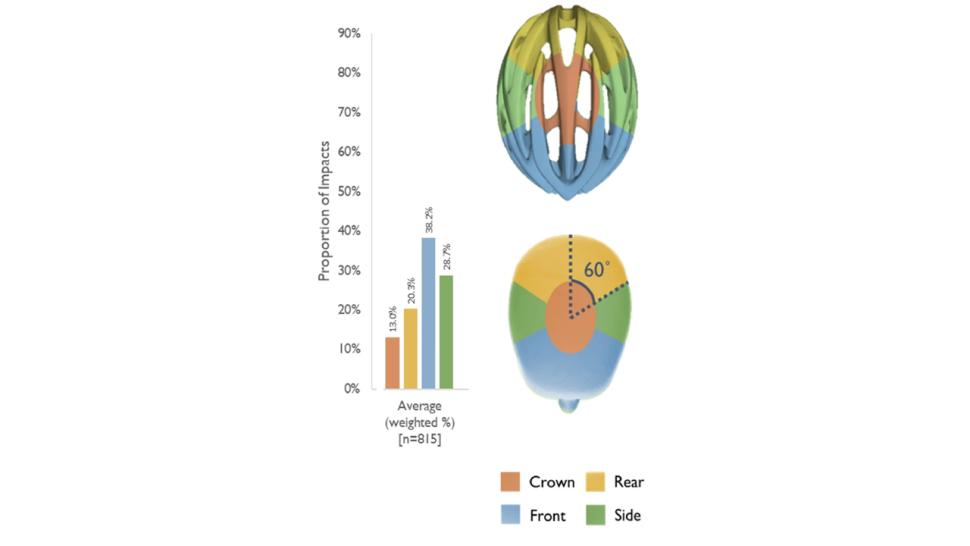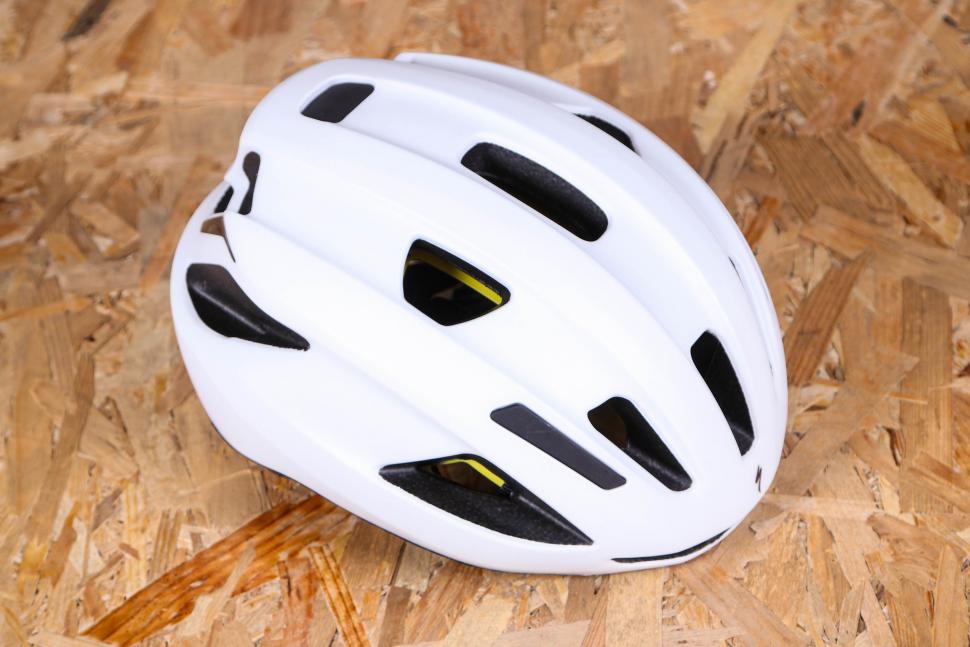- News
- Reviews
- Bikes
- Accessories
- Accessories - misc
- Computer mounts
- Bags
- Bar ends
- Bike bags & cases
- Bottle cages
- Bottles
- Cameras
- Car racks
- Child seats
- Computers
- Glasses
- GPS units
- Helmets
- Lights - front
- Lights - rear
- Lights - sets
- Locks
- Mirrors
- Mudguards
- Racks
- Pumps & CO2 inflators
- Puncture kits
- Reflectives
- Smart watches
- Stands and racks
- Trailers
- Clothing
- Components
- Bar tape & grips
- Bottom brackets
- Brake & gear cables
- Brake & STI levers
- Brake pads & spares
- Brakes
- Cassettes & freewheels
- Chains
- Chainsets & chainrings
- Derailleurs - front
- Derailleurs - rear
- Forks
- Gear levers & shifters
- Groupsets
- Handlebars & extensions
- Headsets
- Hubs
- Inner tubes
- Pedals
- Quick releases & skewers
- Saddles
- Seatposts
- Stems
- Wheels
- Tyres
- Health, fitness and nutrition
- Tools and workshop
- Miscellaneous
- Tubeless valves
- Buyers Guides
- Features
- Forum
- Recommends
- Podcast
TECH NEWS
 Head in rig with camera. Credit_ Tomasz Tomaszewski
Head in rig with camera. Credit_ Tomasz Tomaszewski Are cheaper cycling helmets better than expensive ones? New test and rating system from Imperial College London ranks £45 Specialized lid as safest
In a study funded by the Road Safety Trust and Innovate UK, researchers from Imperial College London have developed a new cycling helmet safety rating system called 'Hiper' (helmet impact protection effectiveness rating) to help consumers decide which helmet might be best for them based on how much impact protection it provides.
The new safety rating system uses scores between 0 for lower protection to 5 for the best performing helmets. 30 of the “most popular adult helmets on the market” were tested in a lab, and the results show that a higher price does not necessarily mean a higher-performing helmet in terms of protection alone.
Why are bike helmets tested for safety?
In the UK and Europe, helmets have to be be tested to the minimum safety standard of EN1078. This specifies certain tests and requirements that helmets must meet before they can be sold, including impact energy criteria, retention system strength tests and more.
But, as researchers have discovered, it is head rotation that is most associated with brain injuries and loss of consciousness. This is something that in-helmet protection systems such as MIPS and Kask's WG11 aims to reduce, by spreading the absorption of the impact throughout the helmet.
There is already an independent testing facility that provides independent helmet ratings in the US, at Virginia Tech. They use a similar scale of 1-5 for each test the helmets undergo, resulting in an overall star rating between 1 and 5 so consumers can understand the relative safety the helmet may offer.
What does HIPER show?
> All you need to know about MIPS
An interesting point this new research has shown is that paying more for a helmet doesn't necessarily mean better impact protection, and in some cases you may get less. That may not surprise some cyclists, who may be just as motivated to invest in a helmet for its claimed aerodynamic performance, aesthetics or lightweight construction, but it's information worth considering before you buy.
Dr Claire Baker, the lead author on the study said: “Interestingly, we found no correlation between price and protection, with the highest-performing helmet being one of the less expensive, retailing at around £50. Our new ratings give consumers objective, evidence-based data to support their buying decisions.”
The overall risk of head rotation and the chance of injury was calculated as an “average of the linear and rotational risk”, with the hope that this offers some weight in real-world experiences.
Dr Mazdak Ghajari, senior author on the research added, “Thanks to funding from the Road Safety Trust, our research can now help consumers to make an informed choice when they buy a helmet. We believe these ratings will lead to further improvements in helmet designs, providing better protection against a range of head and brain injuries if a cyclist is involved in a fall or collision.”
So should you buy a cheaper helmet?
It’s important to remember that this is a small sample size of just 30 helmets on the market today. The researchers have also only tested size mediums in each, so we should perhaps take the results with a pinch of salt until further research has been done. I
That being said, which road helmet that came out on top? None other than the Specialized Align MIPS, which retails at £45. Interestingly, this helmet was also recommended back in 2021 by the Research Institutes of Sweden (RISE) in research also funded by the Road Safety Trust.
And the best performing helmet overall? Another win for Specialized, with its Tactic MIPS mountain bike helmet picking up a score of 4.84/5. And the worst performing road helmet? The Lazer Compact, with a score of just 1.34/5.
You can have a look through all the helmets yourself, and each page offers insight into why each rating was given, including videos of some of the tests as well.
Will this rating become universal?
It’s too early to tell at the moment, but the researchers have been given three more years of funding from the Road Safety Trust so that the team can “apply their testing and rating techniques to children’s helmets as well as continuing to test the wide range of adult helmets available to buy".
Although it’s early days, Hiper could be a pretty useful tool for people who value this type of information when buying a helmet. You can check it out for yourself on the Hiper Helmets website.
Rebecca has been writing about bikes for four years, after a typically ill-timed career change pre-pandemic. She's been riding bikes since she can remember, and fell back in love with them after realising it was faster, cheaper, and more fun than getting the bus to work. Nowadays she enjoys all kinds of bikes, from road to eMTB and is training her border collie pup to become a trail dog.
Latest Comments
- alexuk 10 sec ago
Boardman is the boss. Would be a fabulous Mayor for London I'm sure. Just imagine the potential for transformation.
- chrisonabike 2 min 5 sec ago
Newspapers? Fake news! "Drives clicks / online visits for the advertisers" more like?
- brooksby 4 min 39 sec ago
Titanic? I liked the Aliens reference, myself (and the Welcome signs on the border between Gods Own County and the Other Place...)
- don simon fbpe 33 min 10 sec ago
I couldn't agree more, once the debt has been repaid, there's no place for holding a grudge and if the rider wants a career in cycling after a ban,...
- chrisonabike 57 min 46 sec ago
RE: disqualified driver hits garden wall. Was going to post that but:...
- chrisonabike 1 hour 50 min ago
Disappointing comment - are you not aware of hi-vis?...
- chrisonabike 1 hour 59 min ago
At least we've all agreed contributions have reached 6th-form level; an improvement on the year's one-hit wonders?
- lonpfrb 13 hours 5 min ago
PCCs are an attempt to provide Legitimacy by connecting an elected representative to the oversight of Policing. Thus voter surveys to sample...
- ktache 13 hours 53 min ago
Mine tend to get knocked by the chaining of the bicycle, then fall off later. To be found next time I use the light. Some crushed.




Add new comment
58 comments
Have lots of copious xxx with bears of the opposite xxx ?
I would imagine fit is very important in how a helmet performs, but again this introduces another variable into the reliability and applicability of testing like this.
What this says is, if your head is exactly the same size and shape as the model they use, this score is relevant, otherwise who knows?
FWIW I have never found a Specialized helmet that fits me well (same goes for Bell and Giro) whereas I find Kask helmets really comfortable. Does this mean I should switch to a helemt based on this score even though when I have tried them in the past I have always had noticeable pressure points and gaps which I assume are bad things?
I am with you on saddles, although I don't know what I am going to get when I need a replacement as they have discontinued the Toupe.
Fornicate? Toast marshmallows?
Build MTB trails.
I'm all for objective testing of helmets that enables customers to make an informed choice - I'm a big proponent of the VT Helmets website. Yes it's not perfect, but I see it as a hell of a lot better than no information beyond having passed the basic certification tests.
That said, I have some reservations.
Firstly, is this intended to be different from the VT ratings? The test protocol looks broadly similar, but not quite identical. So far, the results seem broadly consistent (e.g. Specialized Tactic and Specialized Align II also score well on VT) so I'd see them as complementary. It's frustrating this doesn't appear to have been considered. I'd have like to see this new study adopt the same methodology as VT and therefore allow scores to be directly compared (Hiper includes various helmets only sold in UK and so unlikely to make it into VT testing). Or else clearly identify why they felt a different testing protocol was required and what the pros/cons are over the VT method.
Secondly, there are currently only 30 helmets listed, which is a small fraction of the helmets available for sale. Sigma Sports alone currently lists 203 different helmets for sale. Given the number of other factors that go into choosing a helmet (appearance, weight, aerodynamics, price, availability etc.), ratings like these only add value if they capture a large part of the market.
Finally, they need to be clear on exactly what helmet they are testing. For example, the Specialized Align is mentioned in the article - is that the original Specialized Align? Or the Specialized Align II? Given the test picture has the MIPS logo on it, I would presume it is in fact the Specialized Align II, as the original did not include MIPS. In other cases, they may have in fact tested an old version - for example they include the Abus Gamechanger, and from the pictures it does appear to be the original rather than the newer Abus Gamechanger 2.0. Details like that need to be clear and correct in order for people to trust the results.
👍
It's still not measuring the helmet's primary protective effect, though, which is, how well does it protect you from people complaining about you not wearing a helmet?
That should be captured in the "noise reduction" score
Yet another metric which points to the superior effectiveness of the Great Helm / jousting helmet over modern designs.
And if complaints still reach you, just tilt at them.
Cheaper and easier simply to tell them to do one, surely? Or just to ignore them? It would never have occurred to me to wear a lid for any reason other than to protect my head in the event of a crash or because the rules said I had to.
Both tend to be somewhat damaging to future relationships.
It's great to have this simple, useful research on helmets.
But we shouldn't forget that helmets are also bought for comfort, for cooling (or sometimes, warming), for insect protection, for aerodynamics (hard to assess!), for visibility, for low weight, for storing goggles and, often enough, style. For a product, that is probably (and hopefully) never needed, these criteria are also important and may well compensate a slightly lower safety rating.
Especially when you consider that most of the time, helmets aren't doing their protection job (unless you're falling off a LOT).
Edit: I wrote the following text after I had misread the message of hawkinspeter (who points out that most of the time, the helmet is not in a crash - which I read as "most of the time, helmets fail to protect"). My mistake - sorry, hawkinspeter.
Are they not?
There's a strong observer bias: In most cases, where a helmet has protected from worse injury or major harm, only the wearer will ever know. The successful "work" by the helmet will not show in any statistics. You fall but you don't bost about your clumsiness or close call. You don't go to the police, you don't inform the insurance companies, you don't post on (anti-)social media. You just go on with your life - and the poor little helmet will never get much credit.
Obviously, a bicycle helmet cannot protect from a fast car on the opposite lane - but even a car cannot.
No, they are not. Because most of the time you are out on your ride, your head is not constantly smacking off large solid objects.
They are, what is known in the safety industry as, a low demand protection system. Therefore they spend nearly all of their time doing nothing, trying to be as unobtrusive as possible.
The more comfortable, cooler, less draggy, the more likely they are going to be present when required.
You also seem to have misinterpreted people's comments in other parts of this discussion on the hierarchy of protections. Being PPE, it should be the last thought when it comes to improving safety, therefore removing the most common hazards that make people crash before mitigating the severity of those collisions.
I can't tell if you're actively trolling, playing devil's advocate, or just misguided in the logic of your arguments.
I think they've missed a side of the "observer bias" - which is it is far from a given that "where a helmet has protected from worse injury or major harm, only the wearer will ever know".
I'd say mostly the wearer cannot know if a helmet has protected from very much at all - unless one is riding around with accellerometers on one's bonce and can go back and model the dynamics of the collision etc. However I think it's very likely the wearer emerges with the impression that the helmet deserves a lot of credit. That is apparently sometimes even reinforced by the medical profession ("the doctor said I'd be dead if not for..."). Medics will likely be experts at knowing what could have happened injury-wise, but not the chance of it having happened in a particular case with vs. without helmet (again without those accellerometers).
I think it's the salience of the catastrophic potential of head injuries which skews things here. Given the terrible things which - while very unlikely - could happen, surely we should do almost anything that might guard against that? Particularly if it isn't particularly onerous.
OTOH the more you examine that the more conflicts appear. In fact few people have researched exactly what's best to protect us - nor do most "do our utmost" in this regard. People provide cycle helmets, we see cyclists wearing them, ergo we put one on. We don't wear mostly full-face MTB helmets on the roads, never mind motorcycle helmets (obviously they come with down sides but the level of protection is much higher). Most people are happy riding upright bikes whereas a recumbent potentially offers benefits in terms of lower head height and having your legs to absorb impacts in front. Or - given that quite a lot of injury is just "falling off" - especially as we age - perhaps a step-through design or even a tricycle would be safer etc.
However I think it's fair to point out that while they do nothing to reduce the chance of a crash *, once you've put one on (assuming correct fitting etc) it should do at least what it is rated to do. That's with no further thought or effort (barring sweat-removal) from the wearer - like safety footwear.
* As far as I'm aware - there could be other effects (risk compensation, or certain drivers aiming for the racers etc.) so we should always check...
If you mean by "most of the time, helmets aren't doing their protection job" that "most of the time, the helmet is not involved in a crash", I certainly agree. If, however, you mean that "during most crashes, helmets aren't doing their protection job", then I do object.
Regarding helmets compared to other PPE: I would certainly assume that most people have good breaks, reliable handlebars, cranks, forks and frames, that they use a light at night (or with poor light, e.g. riding into the sunset), are capable of turning to see behind, don't wear dark (low viz) clothing (unless compensated by good lights) and have learned to predict dangerous behaviour by other road (and bike-lane) users. And then, a helmet seems to be the next good thing to add. Not necessarily for the 300m to the bakery, but for the daily commute (2x25km a day in my case) between cities, for leisure, for racing, for exercise, ... (or when starting to use clipless pedals
If you think that's actively trolling, feel free to.
EDIT: i (ROOTminus1), I'm sorry - I had misread hawkinspeters message - my response must have made you think I was trolling. No, I was not - but it might have seemed that way after I had misunderstood his message.
If anyone is subject to observer bias, it's the wearer, and confirmation bias too, so they know very little, if anything.
Absurd. If helmets were effective it would definitely show up in death statistics. In Australia, where the wearing rate more than doubled overnight, there was no corresponding death rate reduction, if anything, it went up.
I appreciate your very polite, well informed and case-specific responses.
Would you really expect helmets to be effective in the scenarios where a cyclist is killed? Being run over by a truck? When hitting oncoming traffic head first? When breaking the neck? Bicycle helmets are great for avoiding (serious) injury - but death or paraplegia?
I'm personally fine with protecting my head and brain from (non-lethal) damage - feel free to expose yours to the elements, roads, tree-branches, roots, curbs - you're well within your rights.
Yes, because for thirty years helmet zealots told us they did save lives, but since it has irrefutably been shown that they don't, they've shifted to claiming that they prevent serious brain injury, which, entirely coincidentally, is very difficult to prove.
If cycle helmets did prevent serious head injuries, then it would show up in the death statistics, because some cyclists, a small proportion, die solely from a head injury, so it seems unlikely that they do prevent serious head injury.
I don't think that thirty year old, too positive expectations about saving lives should imply that todays expectations on avoiding serious injury must also be wrong.
Indeed, its impossible to prove that helmets prevent brain injury (unless you have twins, doing the same crash with and without helmets), but there is evidence, there are confirmations by models - and there is plain old common sense. There certainly are few arguments against wearing a helmet.
Would the effect of cycle helmets show up in death statistics? Only if you had very good statistics (i.e. a huge number of deaths by brain damage in a country with a huge population) combined with a sudden change (like the introduction of a helmet law). Such statistics would have to show an almost constant number of fatalities before the law and again after the law. As far as I know, fatality numbers are relatively small (fortunately!) and fluctuate heavily from year to year - so, no, a helmet effect is unlikely to be visible in death statistics.
Here again, people can choose if they like to wear a helmet (outside sports events). Advising to wear one won't cause any damage (apart from the money spent), advising against wearing one, however, may well do.
People banging on about cycle helmets do indeed cause damage as they increase the public perception of the danger of cycling and thus less people cycle which leads to a whole host of sedentary diseases (e.g. heart disease, diabetes etc).
There's also the problem that public discussion of traffic danger ends up spending far too much time discussing helmets rather than the many better ways of increasing safety. As St Boardman once said, helmets aren't even in the top ten of things that make cycling safer and yet helmets dominate discussions and thus actual safety improvements are not considered.
hawkinspeter, I totally agree with your observation when discussing helmets in the public media - which may make people decide against using a bike (with all the negative consequences) and may distract from the other dangers imposed on cyclists by others (drivers, road developers, dog owners, people leaving cars, ...)
But I would not agree when discussing helmets amongst cyclists - and I'm fairly confident we won't find many non-cyclists here...
Yes - I wouldn't include comments on Road.cc as harmful as most readers would already have a strong opinion about helmets and their effectiveness. Also, there's plenty of space and time here for discussion of things such as separated infrastructure, driving standards, junction design etc.
Advising people to wear a helmet does cause damage, in confirming that cycling is a dangerous activity, when it is as safe as many other common activities for which no PPE is required e.g. walking. People are deterred from the activity and lose the overwhelming health benefits (regular cyclists live two years longer than average and suffer less from all forms of morbidity) so they develop chronic, life-changing illnesses and lose many years of active life.
You appear unable to post any evidence that cycle helmets have any benefits, while the disbenefits have been clearly shown.
Eburthebike, I find it interesting how you a) seem to only mention disbenefits that will actually not affect the cyclists that are wearing a helmet but only others, b) how you seem to assume that the communiction in this forum could possibly deter people from cycling and c) how you claim that disbenefits of helmets have been shown that seem to outweigh the benefits.
Regarding benefits of helmets, a quick google scholar search may help - there's a lot of (even open access) material.
https://www.ncbi.nlm.nih.gov/pmc/articles/PMC1332376/pdf/brjsmed00006-00...
https://www.wiwi.uni-muenster.de/ivm/sites/ivm/files/documents/forschung...
https://www.mja.com.au/system/files/issues/205_02/10.5694mja16.00193.pdf
The last article concludes: "In summary, there are reports indicating a decline in cycling based on convenience sampling data following the introduction of helmet legislation in Australia. However, there is also evidence based on better quality data which shows no significant impact on cycling participation." (Note, however, that this article also argues for primary safety measures. It's also worth noting that most of these sources seem to argue against helmet legislation.)
@hawkinspeter: Sorry, I had completely misunderstood your reply - my mistake.
(I had thought you meant that they were not protecting in a crash - but you meant that most of the time, there is no crash.)
Illustrating that helmets, like so many other cycling items, are rarely bought (or sold) to meet a function but rather to meet a fashion.
Put another way, buyers tend to the ignorant when making buying decisions, prefering the glamour to the actual performance. Of course, it's difficult to differentiate glamour from performance when things are described only by adverts (including the faux-reviews here) rather than by any sort of objective or disinterested investigation.
Still, Road.CC has reported this particular testing approach so +1 to journalism rather than advert-proxyism, for a change.
Pages